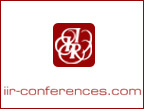

 |
 |
| The only publication dedicated to OSS Volume 2, Issue 4 - September 2005 |
|
|
Can carrier Ethernet ever be as secure as traditional telecoms links? Protection of private customer traffic can be enhanced by secure VLANs that enable multiple customers (or applications) to exist on one Ethernet network. This is now an established standard (IEEE 801.Q) for doing this. For large enterprises, for government, or for particularly sensitive applications, telcos can always provide physically separated capacity (separate fibers or wavelengths) which is how traditional networks kept customers apart: even if this uses up some capacity it may be the most cost-effective way to do it. Can a LAN technology such as Ethernet be delivered with “carrier-class” availability and reliability? Probably. It depends how much you want to pay, but there seems to be no technical barrier to delivering carrier-class Ethernet.  One approach might be to use IEEE 802.17, more commonly referred to as Resilient Packet Ring (RPR) technology. RPR promises 50ms network restoration: if a link fails, the traffic can be rerouted in less than 50ms. To put this in perspective, continuous latency of less than 150ms in a voice call is considered acceptable: a 50ms break in transmission would hardly be noticed. One approach might be to use IEEE 802.17, more commonly referred to as Resilient Packet Ring (RPR) technology. RPR promises 50ms network restoration: if a link fails, the traffic can be rerouted in less than 50ms. To put this in perspective, continuous latency of less than 150ms in a voice call is considered acceptable: a 50ms break in transmission would hardly be noticed.
Can carriers deliver QoS based services over Ethernet? Can carriers deliver Ethernet as a network service with a guaranteed QoS? The answer to both questions is “yes.” Ethernet allows class-of service prioritization, ensuring that QoS-sensitive services (such as voice) are given priority over an Ethernet link, reducing levels of latency and jitter. Given adequate bandwidth, we can engineer any link to ensure a certain level of QoS for any type of traffic – but, it must be noted, this level of QoS is statistical rather than absolute. This is not necessarily a bad thing and reflects the way QoS has traditionally been delivered by telcos throughout the history of telecommunications. However, it may be reasonable for carriers to respond to the requests of some customers for tougher SLAs that contain guarantees of certain levels of quality. Some vendors now are able to deliver “hard QoS” for Ethernet which essentially reserves specific capacity for certain services carried over the Ethernet (which is not quite the same as QoS for the Ethernet service itself). However, there is a trade-off: hard QoS means softer QoS for customers who are not paying for rigorous SLAs. As for QoS for the Ethernet service itself, the answer is the same as the answer to the question of availability and reliability: pre-assigned dedicated bandwidth, available whether it is in use or not, costs money. What is important is that the ability to deliver QoS appears to no longer be a big barrier to deploying Ethernet in the WAN, and that carriers may be able to offer customers QoS choices depending on their needs and budgets. A quick survey of today’s state of the Ethernet art indicates that the technical barriers to Ethernet as a carrier service are being steadily knocked down. At this stage, it seems entirely reasonable for enterprises to expect carriers to deliver WAN Ethernet that works just as well as LAN Ethernet, and can interwork with it seamlessly. At the same time as this is a revenue opportunity for carriers, it’s also something of a threat: ubiquitous IP over Ethernet permits enterprises and others to build geographically large networks that can carry services that can supplant more traditional carrier data services – specifically voice and dedicated data lines. Despite this dilemma, it is clear that eventually traditional carriers will not have much option, they will deliver WAN Ethernet services, or others will. If they do it, they need to be successful, and this may be achieved by not adhering too strictly to some traditional carrier approaches.
© 2005, All information contained herein is the sole property of Pipeline Publishing, LLC. Pipeline Publishing LLC reserves all rights and privileges regarding the use of this information. Any unauthorized use, such as copying, modifying, or reprinting, will be prosecuted under the fullest extent under the governing law. |